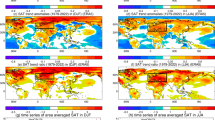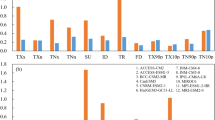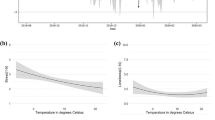Abstract
THE quality of a winter season may be fairly estimated from the number of days on which the minimum temperature has gone below a given limit; and the quality of a summer season, from the number of days on which the maximum temperature has gone above a given limit. Two tables issued from Greenwich are here convenient for use; one giving frost days (since 1841), the other days on which the temperature reached or exceeded 70°. There are more of the latter than of the former; seventy-seven on an average, as against fifty-five frost days (in September to May).
This is a preview of subscription content, access via your institution
Access options
Subscribe to this journal
Receive 51 print issues and online access
$199.00 per year
only $3.90 per issue
Buy this article
- Purchase on SpringerLink
- Instant access to full article PDF
Prices may be subject to local taxes which are calculated during checkout
Similar content being viewed by others
Rights and permissions
About this article
Cite this article
M., A. Summer and Winter in Relation to the Sunspot Cycle. Nature 58, 270–271 (1898). https://doi.org/10.1038/058270b0
Issue date:
DOI: https://doi.org/10.1038/058270b0



